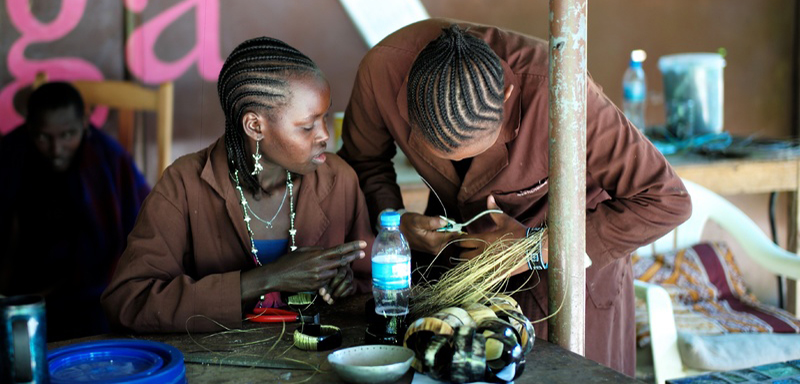No matter how amazing your project is if your proposal is disorganized your project will appear disorganized. A project proposal needs to explain the plan and purpose for the set of activities an NGO wishes to implement, and requests funding from a donor. A project proposal does more than just secure grants. The process of drafting a proposal helps NGOs plan a project from the idea stage to reality. It provides a way to flesh out, explain, test, prove, critique and share the project details. Thus, creating an outline of your project proposal early on is a great way to keep the proposal focused and organized.
Here are four methods to organize a proposal:
By Project Plan
The purpose of a project plan and proposal are very different. However, their content is often similar enough that many proposal writers will take the project plan as a starting point and modify it to become a proposal. This is not a bad strategy for preparing a proposal quickly, but it is not the most effective. The outline and headings, in this case, will be based on what the NGO needs to implement the project, which is often very different from what the donor needs to evaluate the project. It is often obvious to donors which NGOs used this format because there is more emphasis on the technical details surrounding activities, timeline, and M&E plan rather than holistic information in the project rationale, goal, beneficiaries, and sustainability.
Example outline:
- Introduction
- Methodology
- Activities
- Anticipated Results
- M&E Plan
- Budget
- Timeline
Click here to download: The Ultimate Checklist for Proposal Writing
By Proposal Parts
Another common and easy method to format a proposal is just by taking all the parts of the proposal you want to include and just calling them by name. This method is fairly useful to both the NGO for internal planning and to the donor for evaluation. However, knowing which parts to include and how to order each part can be challenging. For example, should the Sustainability Plan be included before or after the Budget? Another challenge is that this format style can sometimes feel disjointed, as each piece is described separately with no flow from one section to the next. Additionally, it is easy to forget mentioning important points not specifically brought up in each segment, such as beneficiaries and relevance to the donor’s priorities.
Example outline:
- Project Rationale
- Project Goal
- Objectives
- Strategy
- Activities
- Outputs, Outcomes, Impact
- Project Innovation
- Cross-cutting themes
- Logical Framework
By Narrative
This option for organizing proposals tries to shape your proposal into a story. This is a very engaging and persuasive method, however, it is also more challenging to do well. This format requires very strong writing skills and lots of time. Additionally, not all projects can easily be turned into a narrative: saving young girls from child marriage might make for a great story, but lobbying the government to change marriage laws much less so. Projects that work well for this narrative style have relatable beneficiaries and clear solutions, similar to case studies. This style also ensures that each piece of the project flows together in the proposal, but the pieces that do not fit in easily (M&E plan, organizational profile, etc.) are often discarded or placed in the annex. Despite the difficulties in this format, this is by far the best option for building a highly persuasive and marketable proposal focused on the beneficiaries.
Example outline:
- Setting the Stage (project background)
- Main Characters (Project beneficiaries)
- The Problem
- The Solution
- The Impact
By donor requirements
For applications to donors with very strict but transparent requirements, this is by far the best option for organizing your proposal. The idea behind this format is to center the entire proposal around how the donor will evaluate the proposal. This helps to ensure you do not miss any requirements and that the donor does not miss anything important for the evaluation. The potential downsides to this method are that each proposal has to be built around a specific donor, which requires a good amount of donor research and customization. It also requires that the donor make their complete evaluation criteria public.
Sample donor criteria:
The Foundation’s Board of Directors will evaluate all proposals based on:
- Is the project relevant to the Foundation’s Funding Strategy?
- How will the project ensure strong impact?
- Is the project sustainable?
- Is the projected cost-effectiveness?
- Is the NGO qualified to lead this project?
Example outline:
- The relevance of the Project
- Ensuring Strong Impact through Community
- Ensuring Sustainability through Market Forces
- The Cost-Effective Solution
- Our NGO’s Unique Qualifications
How to Choose a Format
Hopefully, it has been made clear that there is no one best way to organize a proposal. It will depend a lot on the donor, the type of project, and internal capacity. Below is a table illustrating the strengths and weaknesses of each method.
The outline by proposal parts is a fairly safe bet for all types of donors and is also fairly straight-forward to write for those new at proposal writing. An outline based on the project plan is a fairly easy way to prepare a proposal, so great for when you need to submit something quickly or to donors already likely to fund you. It is also really great for donors who like to get directly involved in activities and see all the technical details. However, for donors who care more about the overall impact or individuals who need more convincing to give funding, the narrative format is often a better choice. For institutional donors with very clear application expectations such as those from governments or CfPs, the format following donor requirements is the best option

